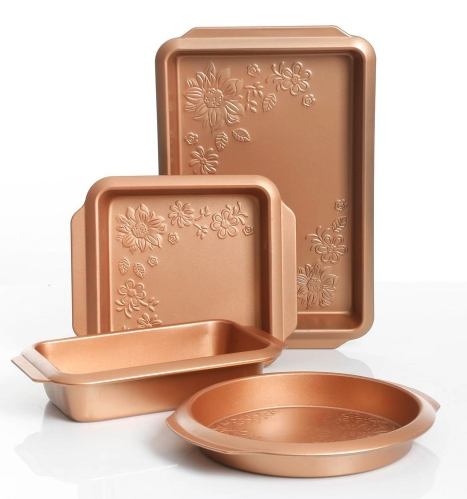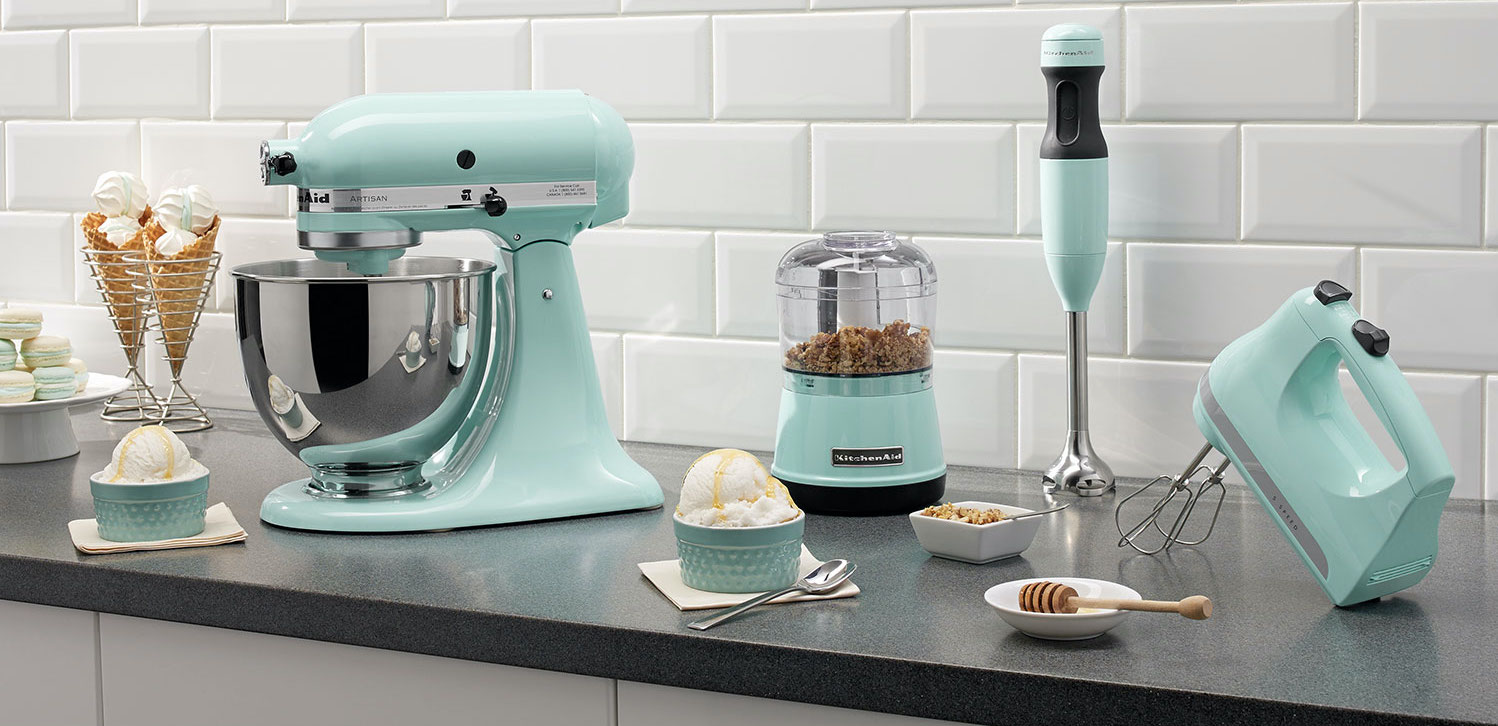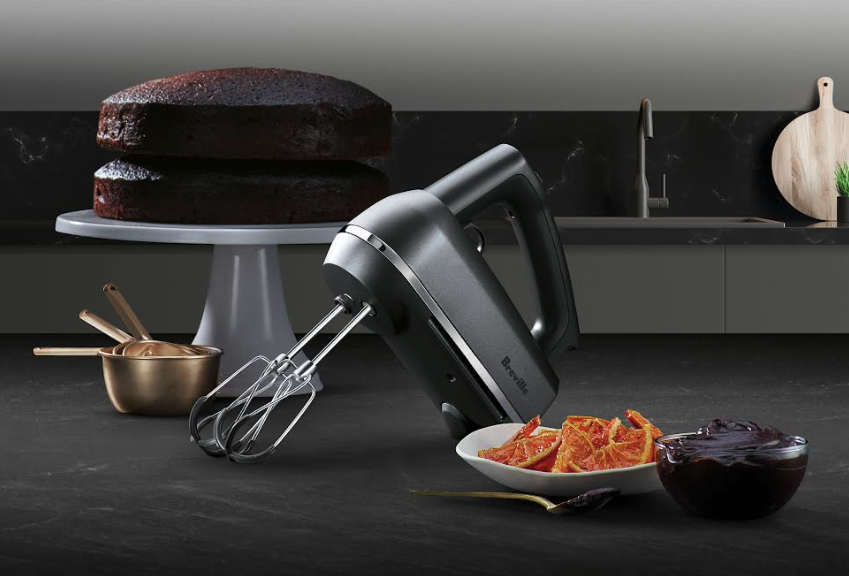
Like any other skill, starting to bake for the first time can be daunting. You might have ideas in your head about who can or can’t be a baker (spoiler: anyone can become a great baker!), or maybe you’re just not sure where to begin. Here’s an easy guide that covers how to buy bakeware for beginners, intermediates, and experts.
Bakeware Buying Guide Quick Reference Handout
Table of contents
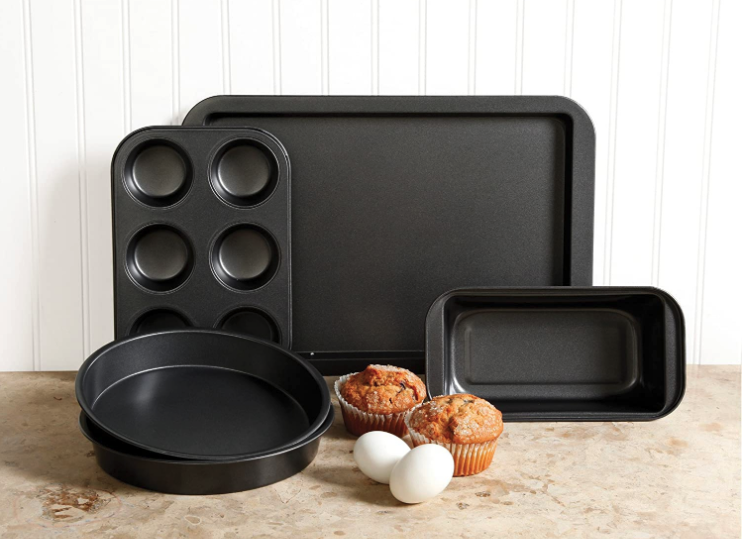
What is bakeware?
There’s a bit of a divide in the kitchen: chefs versus bakers. Chefs make food of all kinds, serving up fresh dishes in home kitchens, restaurants, and clubs. Bakers use only dry heat, especially ovens, and often make things like breads, cakes, cookies, and pastries. Bakers make all three of the classic categories of Western baked goods: pâtisserie (delicate French pastries like mille feuille), boulangerie (French breads and baguettes), and viennoiserie (Austrian-style breakfast pastries like Danishes and croissants).
Bakeware, then, is anything that you use to cook these baked items (and more): specifically things that go in the oven.
How to buy bakeware for beginners: The essentials
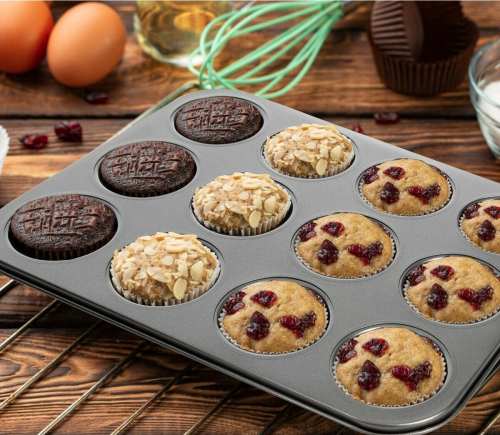 There are a few standard items recognized as essential bakeware pieces. If you’re learning how to bake for the first time, or moving out on your own for the first time, these are the items that you’re going to want to purchase first. They’re the most versatile and widely-available, so you’ll be able to use them in a wide variety of recipes.
There are a few standard items recognized as essential bakeware pieces. If you’re learning how to bake for the first time, or moving out on your own for the first time, these are the items that you’re going to want to purchase first. They’re the most versatile and widely-available, so you’ll be able to use them in a wide variety of recipes.
- Cookie sheets/baking trays – These are the most common bakeware essential. Baking trays, also known as baking sheets or cookie sheets, are used to bake everything from cookies to pretzels. If you cook or bake often, investing in high-quality baking trays will pay off quickly.
- Jelly roll pans – Cookie sheets with shallow edges. Great for multi-purpose use and roasting vegetables.
- Edgeless cookie pans – Have one single raised edge for easy handling, but otherwise end abruptly. Great for making cookies, but not as versatile as a jelly roll pan. These pans are often insulated and may be called “insulated cookie sheets” or “slide-off cookie sheets.”
- Rectangular baking pans – Commonly used for cakes, large recipes of brownies, squares (like Rice Krispie squares or puffed wheat squares), and bars. Rectangular baking pans can double up as baking trays for dinner items like lasagna and casserole, and are great at containing rising doughs used in bread rolls and cinnamon buns.
- Square baking pans – Square baking pans are essentially rectangular baking pans made for smaller recipes. Great for using in smaller ovens, such as countertop convection toaster ovens.
- Cupcake/muffin pans – Also known as muffin tins or cupcake tins, these pans are great for keeping your cupcakes and muffins well-shaped. Most recipes fill each of these divots 2/3 full to create that perfect, overflowing top. You can also use muffin pans to bake items like miniature cheesecakes and Yorkshire pudding.
How to buy bakeware for beginners: A few more basics
- Loaf pans – Also known as bread pans. These long, narrow pans are the perfect place for a loaf of bread or pastry to rise.
- Round cake pans – When choosing your round cake pans, opt for Springform if possible. Springform pans come in two pieces, with a textured bottom and spring-release side to help you remove your cakes without damaging them.
- Pie pans – If you make your crusts at home, you’ll need a pie pan or pie dish in your kitchen.
Standard bakeware sizes
 Each of the pans listed as bakeware essentials above comes in different sizes. It can be hard to figure out how to buy bakeware if it’s your first time baking, but lucky for you, there are some pretty standard sizes for each!
Each of the pans listed as bakeware essentials above comes in different sizes. It can be hard to figure out how to buy bakeware if it’s your first time baking, but lucky for you, there are some pretty standard sizes for each!
It’s important to use the recommended size of pan for your recipe. Where cooking can be an art, baking is more of a science: each factor and measurement has to be exact, or as close to it as possible, to achieve consistent results. If you use a pan that’s too big for your recipe, you may end up with a shallow batter that bakes too quickly and dries out in the oven. If you use a pan that’s too small, your batter might overflow and be undercooked in the middle.
- Cookie sheets/baking trays – These are the least standardized item, and are often sold in sets of 2-3 sizes. 17″ x 11″ is the industry standard.
- Rectangular baking pans – 9″ x 13″ is standard.
- Square baking pans – 8″ x 8″ or 9″ x 9″ is standard.
- Cupcake/muffin tins – These tins are about the same size as a baking tray. They generally fit 12 muffins.
- Loaf pans – 9″ x 5″ is standard.
- Round cake pans – 9″ pans are standard for round cake pans and round Springform cake pans.
- Pie pans – 9″ is standard, but these are generally slightly smaller than cake pans as they taper inwards that the bottom.
How to buy bakeware: Selecting for materials
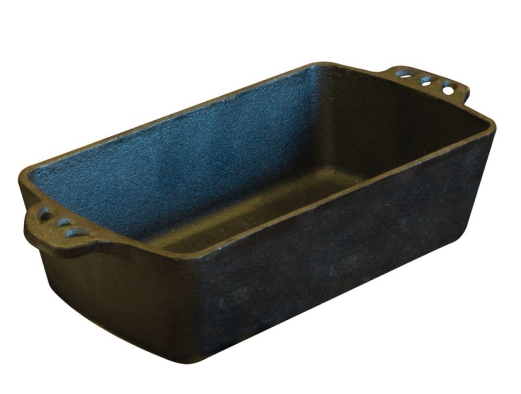 The materials you use in your oven play an important role in how your baked goods will turn out. Even differently coloured bakeware will produce different results, so make sure to use the right bakeware for your recipe. If you’re not sure how the colour and material of bakeware influences your cooking time and results, try making one of your favourite recipes using different pans. Place them in the oven at the same time to see the results firsthand.
The materials you use in your oven play an important role in how your baked goods will turn out. Even differently coloured bakeware will produce different results, so make sure to use the right bakeware for your recipe. If you’re not sure how the colour and material of bakeware influences your cooking time and results, try making one of your favourite recipes using different pans. Place them in the oven at the same time to see the results firsthand.
In general:
- Thinner and darker items like old, non-insulated baking trays produce the most crisping. They get hotter on the bottom, which means that items like cookies and cakes bake faster from below than they do from up top.
- Clear, thick, and light-coloured bakeware such as glass, stoneware, and insulated cooking trays distribute heat more evenly. Items cooked on this type of bakeware may take longer to bake, and will come out with a softer, lighter-coloured bottom.
How different bakeware materials change your results
 Bakeware materials span a broad range, from thin, affordable options that are great for trying baking for the first time to durable materials used by baking enthusiasts and professionals. Some of the common materials that bakeware is made from include:
Bakeware materials span a broad range, from thin, affordable options that are great for trying baking for the first time to durable materials used by baking enthusiasts and professionals. Some of the common materials that bakeware is made from include:
- Glass – For long-lasting, non-reactive bakeware, reach for oven-safe glass that’s designed for use in high heat. Glass never leaches colour or flavour into your food, and it distributes heat evenly and slowly as it’s an effective insulator. (That’s one of the reasons why we use glass windows in our homes!) Expect a longer baking time when you bake with glass.
- Ceramic – Ceramic bakeware is affordable and easy to clean. It is less durable than stoneware, but is widely available in many attractive designs. Opt for ceramic bakeware to stock your kitchen on a budget or try out new bakeware shapes.
- Stainless steel – Stainless steel is a safe, long-lasting bakeware material. Light-coloured stainless steel is great for baking cookies and pastries that are prone to burning from the bottom.
- Insulated – Used primarily in baking trays, insulated bakeware helps distribute heat to prevent over-browning from the underside. To mimic the effect of insulated bakeware, some bakers will use two sets of thin baking trays. They’ll bake on one of them, as normal, but place the other one on a lower rack to act as a heat shield.
Bake, store, and serve: Bakeware materials with an enamel finish
Some bakeware materials are prized for their ability to do it all. Items like cast iron and stainless steel develop a beautiful seasoning and patina with age, provided that they’re well cared-for.
Enamelled pieces are another popular choice. These items tend to have excellent heat distribution and retention, and often come with lids and a beautiful, glossy finish. You can use a beautiful piece of enamelled bakeware to let your dishes rise, bake, and rest, and then you can keep them in their dish to serve and store.
Because of their high quality and eye-catching finish, enamelled bakeware makes for a great wedding present. Check out our Wedding Gifts Buying Guide for other excellent choices.
- Stoneware – Commonly used for baking breads, casseroles, soups, and single-serving desserts. Stoneware distributes heat evenly and often comes with a matching lid.
- Stone loaf pans may be used in traditional bread recipes.
- Ramekins and French onion soup bowls are generally made from stoneware.
- Your stoneware may have a stone finish or be covered in enamel.
- Cast iron – Prized for its excellent heat retention, high-quality cast iron bakeware can last for generations. You can use your cast iron bakeware to bake a wide variety of items, including cornbread, quiche, pizza, artisanal bread, pie, and giant cookies.
- Cast iron is available in a cast iron or enamelled finish.
Non-stick bakeware materials
- Non-stick – Non-stick pans are available in many different formats. From non-stick aluminum to non-stick carbon steel, each non-stick material performs a little differently. Non-stick finishes are great for use in recipes where you can’t use a liner (such as festive moulds). Be careful to never use abrasive cleaners or metal utensils on your non-stick bakeware, as they can damage its finish and cause it to chip off or flake.
- Silicone – Silicone bakeware resists oven temperatures and is flexible, which can make it easy to pop baked goods out of their moulds. Bakeware made from silicone is heat-resistant, stick-resistant, and non-reactive.
- You can also purchase silicone baking mats and muffin liners to use with your pre-existing bakeware. Silicone accessories are reusable and typically dishwasher-safe.
Specialty shapes of bakeware
To achieve specialized results or shape your baked goods in festive figures, opt for speciality bakeware. Specialty bakeware may include high-end materials, holiday-themed designs, or pastry-specific moulds like the ones used in angel food cake or cannelés de Bordeaux.
Bakeware accessories
With the right accessories, using your favourite bakeware pieces can be even easier. If you’re looking to expand your kitchen’s repertoire, or find a great gift for a baker, here are some basic accessories to consider:
- Mixing Bowls and measuring cups – To make sure you’re following each recipe correctly, use measuring spoons and cups when you bake.
- Baking tip: Different ingredients are designed to be measured with different techniques. Flour should be loosened and tossed before scooping gently and levelling off with a straight edge—never tapped down. Brown sugar should be gently packed into the measuring cup. Liquids should be measured using a liquid, not dry, measure.
- Digital scale – Digital scales offer significantly more precision than measuring spoons and cups, as they don’t require different measuring techniques.
- Flexible spatulas – Used to scrape bowls and make sure you get every last drop of dough, batter, icing, and more. Spatulas are a kitchen essential, even for those who don’t bake.
- Opt for a silicone spatula if you want a utensil that’s dishwasher-safe and won’t melt or stain.
- Stand mixers and hand mixers – Getting your doughs and batter to the right texture can be hard work. A high-quality stand mixer or hand mixer will help take the heavy lifting out of baking, so you can enjoy your results without the workout.
- Parchment paper – Great for lining bakeware that might stick.
How to care for your bakeware
Size, shape, and material are important features of bakeware—but so is functionality. When purchasing bakeware for yourself or as a gift, make sure to check what temperature it’s rated for and if it can go in the dishwasher.
With proper care, some bakeware items like cast iron pans and enameled stoneware can last for multiple generations. That isn’t an exaggeration: Vintage stoneware and cast iron is highly sought-after for its exquisite production quality and longevity. Make sure to wash your bakeware gently and carefully, following each item’s instructions to ensure that it’ll last for as long as possible.
Finally, make sure to use your bakeware only in appropriate temperatures. Some pans may not be constructed for broiling, and most bakeware will crack if used on the stovetop. Similarly, bakeware should never go from extremely cold to extremely hot or vice-versa (with the exception of silicone), as it will generally crack or permanently warp.
Take the next step
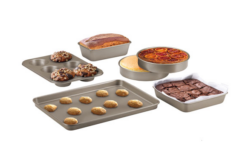 Now that you know how to buy bakeware for yourself or as a gift, you’re ready to choose the perfect, oven-ready items. Shop Best Buy’s selection of bakeware today.
Now that you know how to buy bakeware for yourself or as a gift, you’re ready to choose the perfect, oven-ready items. Shop Best Buy’s selection of bakeware today.

